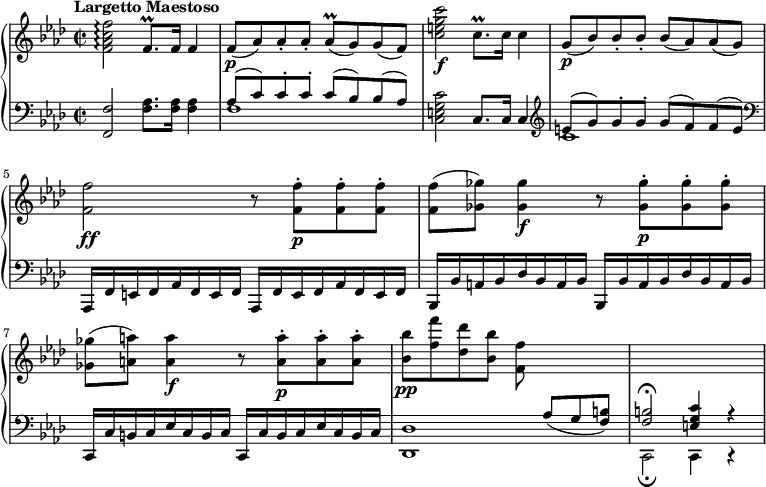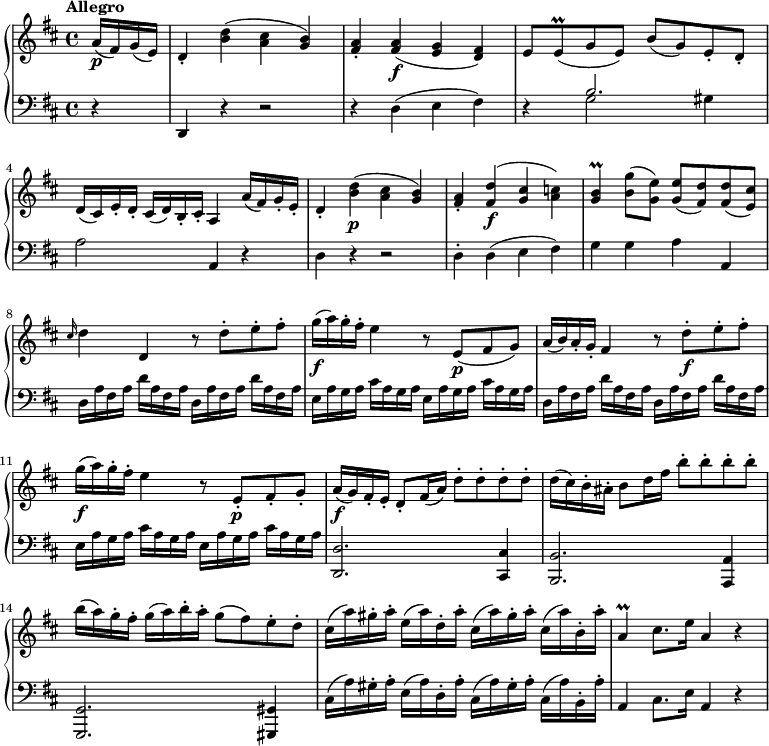The sonatas
No. 1 in E♭ major
- Allegro cantabile (E-flat major)
- Andante (B-flat major)
- Rondo vivace (E-flat major)
The second theme of the first movement closely resembles part of the first, so that in the recapitulation the first theme can be omitted entirely without its absence being noticed. One of the main characteristics of Beethoven's thought is evident in this sonata: the development of a multitude of contrasting motifs and characters from a basic cell. The liveliness of the Rondo reveals Beethoven's evident pleasure in his own virtuosity.

- Beginning of No. 1 in E♭ major
No. 2 in F minor
- Larghetto maestoso – Allegro assai (F minor)
- Andante (A-flat major)
- Presto (F minor)
The musical ideas are individualized in this sonata, where the strongest emotions are expressed. In the conception of the time, the key of F minor is perceived as severe and passionate, and Beethoven would return to this character later, especially in the Sonatas Op. 2 No. 1 and Op. 57 . The first movement, deeply Beethovenian, begins with a slow introduction that makes abundant use of contrasting registers. The appearance of the main theme through repetitions and the change of tempo to allegro already prefigure the Pathétique Sonata . The Presto, with its unison passages and its agitated lines, puts a passionate end to this remarkable work, written by a child.

- Beginning of No. 2 in F minor
No. 3 in D major
- Allegro (D major)
- Menuetto – Sostenuto (A major)
- Scherzando: Allegretto, ma non troppo (D major)
In the first movement the second theme is introduced as expected, in the dominant, but in the recapitulation it reappears after only four bars, and in the key of G major rather than D major, creating interesting ambiguities about its true status. The Menuetto has six variations, the fourth of which is technically difficult to play in minuet tempo. The composer again uses G major as a substitute for D major in part of the finale, thus establishing a large-scale tonal relationship of the kind normally associated with the mature Beethoven. The humorous sentiment suggested in the Scherzando was to become a regular feature of Beethoven's work.

- Beginning of No. 3 in D major


